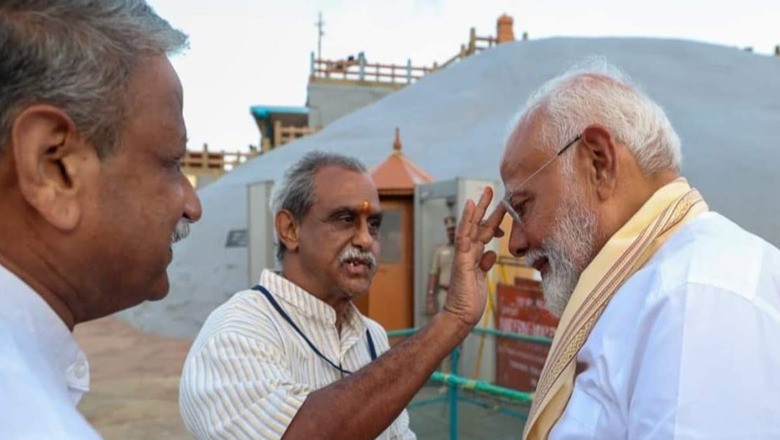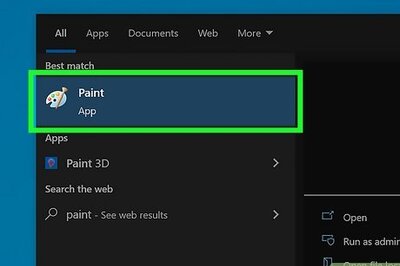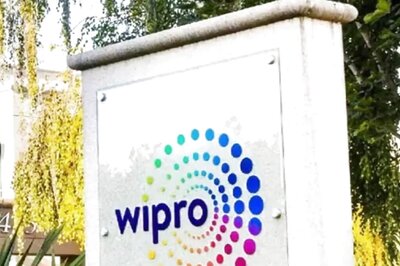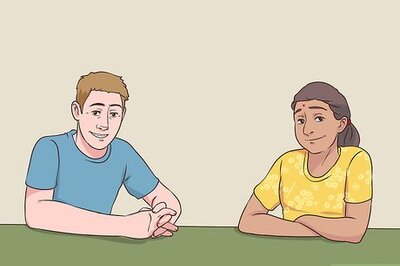
views
On May 30, Prime Minister Narendra Modi first offered puja at the Vivekananda Rock Memorial in Kanniyakumari, Tamil Nadu, and at night he sat for a long time at the Maa Parvati Temple, which has a footprint believed to be of the deity on a rock. According to legends, it was on this rock that Goddess Kanyakumari (Parvati) performed meditation for Lord Shiva. Now, a meditation hall known as Dhyana Mandapam is also attached to the memorial for visitors. The Prime Minister sat on meditation in that very area. This is the same rock that Swami Vivekananda sat and meditated on for three days and nights, December 25-27, 1892, and found his mission ahead. He said, “I hit upon a plan”.
Speaking to News18, Shri Kishor Tokekar, All India Joint General Secretary of Vivekananda Kendra and Managing Trustee of Vivekananda International Foundation, New Delhi, said, “Prime Minister Narendra Modi’s approach was unique. It was clear that his meditation was for the betterment and future of India. Swamiji’s meditation was for a mission, and the Prime Minister’s meditation too is for a mission. He sat in Pranayama for a whole hour, and he was very firm during the practice. This clearly proves how dedicated he is to meditation and Pranayama. This was a great experience for us too, as we saw his whole concentration was for our nation.”
On the night of May 30, the Prime Minister walked on the entire area of the rock memorial and took only a liquid diet at night. On the morning of the 31st, he woke up at around 5.30 am and walked around the area again. At about 8 am he sat in meditation, which continued for more than an hour.
The memorial to Vivekananda was built on the rock mass surrounded by three seas — Arabian Sea, Indian Ocean, and Bay Bengal — at the southernmost tip of India. Undoubtedly the rock is a monument of high significance not only in the life and mission of Swami Vivekananda but also for the nation to recollect his vision and mission for India.
A memorial for Swami Vivekananda on the rock was a long-felt necessity. The construction of the memorial was conceptualised by the Rashtriya Swayamsevak Sangh with the blessings of sages like the Kanchi Paramacharya and the Sri Ramakrishna Mission on the centenary of Swami Vivekananda in 1963. The responsibility for the construction was entrusted to Shri Eknath Ranade who was relieved from his position as the general secretary of the RSS to undertake the mission construction.
Ranade had to overcome huge political objections from the then governments at the Centre and the state to any construction activity on the natural rock. Lal Bahadur Shastri who later became the Prime Minister of India, told Ranade that unless he got support from a larger number of Members of Parliament, the government would not agree to the construction of the memorial.
To Shastri’s surprise, in just three days, Ranade got the letters supporting the memorial signed by 323 Members of Parliament belonging to all political parties. That helped to overcome the political objection to the memorial.
The rock memorial was recommended by nearly two-thirds of the 494 MPs then. The state government which had said that the size of the memorial should be small, agreed on the intervention of the highly revered Shankaracharya of Kanchi, to allow the construction of the large and imposing memorial which stands on the rock today. The construction of the memorial took six years.
The Vivekananda Rock Memorial was dedicated to the nation by the constitutional head of India and endorsed by the political head of India. It was inaugurated by the constitutional head of India, then President Dr VV Giri in 1971.
Explore in-depth coverage of Lok Sabha Election 2024 Voter Turnout, Upcoming Phase, Results Date, Exit Poll And Much More At News18 Website




















Comments
0 comment